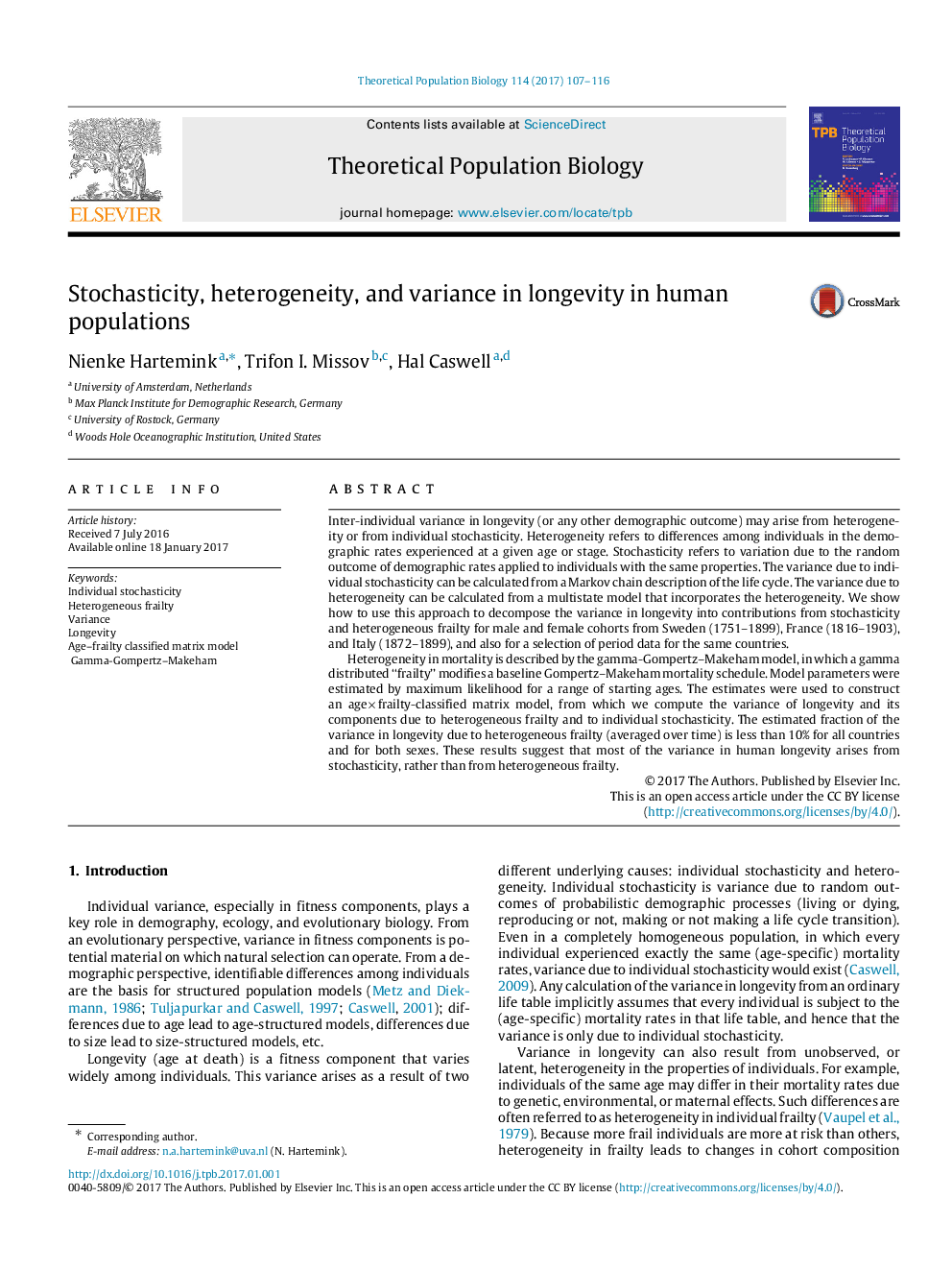| Article ID | Journal | Published Year | Pages | File Type |
|---|---|---|---|---|
| 5760591 | Theoretical Population Biology | 2017 | 10 Pages |
Abstract
Heterogeneity in mortality is described by the gamma-Gompertz-Makeham model, in which a gamma distributed “frailty” modifies a baseline Gompertz-Makeham mortality schedule. Model parameters were estimated by maximum likelihood for a range of starting ages. The estimates were used to construct an ageÃfrailty-classified matrix model, from which we compute the variance of longevity and its components due to heterogeneous frailty and to individual stochasticity. The estimated fraction of the variance in longevity due to heterogeneous frailty (averaged over time) is less than 10% for all countries and for both sexes. These results suggest that most of the variance in human longevity arises from stochasticity, rather than from heterogeneous frailty.
Related Topics
Life Sciences
Agricultural and Biological Sciences
Agricultural and Biological Sciences (General)
Authors
Nienke Hartemink, Trifon I. Missov, Hal Caswell,
